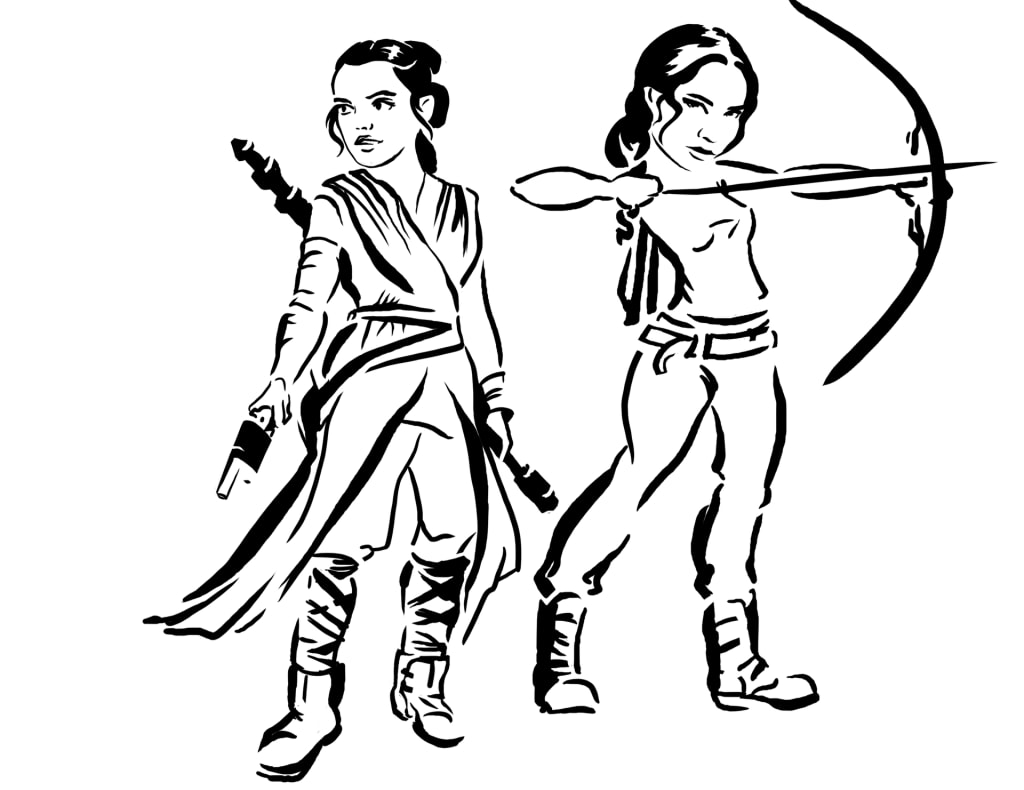Suzanne Collins, "The Hunger Games"
Life or death reality show

What creates a publishing phenomenon is the novelty of the subject. The same goes for Eco’s murderous monks, for Meyer’s “vegetarian” vampires, for Dan Brown’s sangreal lineage, or for James’s sadomasochistic bondage. Everything that comes after, is in the trail, is an imitation of the original.
With Hunger Games by Susanne Collins, perhaps a season of adolescent bloody reality shows opens, but it being the forefather of a new genre, lies in the cruelty of the subject matter that nails you from first to last page.
Katniss Evergreen is a teenager from District 12, in the post-apocalyptic continent of Panem, a wild and barbarous North America, where refined science and the Middle Ages coexist. As punishment for an ancient rebellion against the rich and non-performing capital, the various districts must offer a human sacrifice annually. In a reality show, which everyone is obliged to follow, each district tosses up a boy and a girl to offer, or rather immolate, in a fight with a single winner and a single survivor. The name extracted is that of Primrose, Katniss’ little sister, and she cannot accept it, she volunteers in her place.
Thus begins a preparation that has all the unpleasant flavour to which we have been accustomed by years of television broadcasts such as the Island of the Famous or Big Brother, made even more bitter by the awareness that the elimination of the young participant will coincide, not with his/her return to home, but with his/her death. Competitors are trained, dressed, interviewed, embellished by stylists and make-up artists, and then thrown into the arena, a place reminiscent of the dome of “The Truman Show”, where nothing is natural and everything is maneuvered by Strategists, i.e. authors of the program. The streams flow or dry out on command, the rain pours down on request, the air becomes hot or freezing according to what the program and the audience require. Katniss looks at the moon and hopes that at least that is true, and is the same moon of her house, to feel less alone, less vulnerable, less at the mercy of a dictatorship that kills, that whips, that rips the tongue for the slightest transgression, for a word too much or a defiant attitude.
In the arena a deadly struggle takes place with hands, nails, teeth, blades, arrows, which takes us back to a past / future already seen in films such as “Mad Max”. Competitors, or rather “tributes”, must kill each other to survive, otherwise they will be eliminated. A cannon shot marks the contender’s exit from the scene and a hovercraft lifts the corpse and takes it away. The only feeling is fear, which turns into blind fury; friendship is only a temporary alliance against the strongest, no weakness is granted.
It is not understandable how one can define “Hunger Games” “a novel for children”, if not, perhaps, in the inability of the protagonist (and the author) to face and fully develop the relationship with the young person who loves her, Peeta, and the triangle with her childhood friend, Gale. It can be objected that the novel is centered in the microcosm of the arena, in a space-time bubble that looks like a video game, where loving is secondary to staying alive, to keeping intact the possibility of experiencing human feelings.
“I’m not sure how to say it. I just don’t want to … lose myself. Does it make sense? — he asks. I shake my head. How could he lose himself? — I don’t want them to change me in there. That they turn me into a kind of monster that I am not?”
The anguished emblem of this nightmare situation is the seal that is projected onto the screen of the sky every night, preceded by a hymn. Immediately after, the image of those who died that day appears. The stomach contracts with horror, reading.
“The night has just fallen, when I hear the hymn that precedes the summary of the deaths. Through the branches I see the seal of Capitol City which seems to float in the sky. In fact, I’m looking at another screen, a huge screen carried by one of their hovercraft.”
The meaning of the novel is the revolt of Katniss and Peeta, the boy who loves her, to all this pain, to the obligation to do evil anyway, to kill or be killed. Suffering, even feeling sorry at the thought of killing an innocent companion, is also considered insurrection. When Rue, the smallest of the tributes, so similar to the protagonist’s little sister, dies, Katniss weeps and sprinkles her body with flowers, before the hovercraft comes to pick her up, and this is already an act of rebellion. The same goes for the final gesture: Katniss and Peeta choose to die together rather than kill each other, they choose to do what Peeta has decided from the beginning, that is, not to concede himself to the enemy, to remain human, to remain internally pure and free. They will be saved in extremis, but the ending remains open for the other books of the series.
This book is a mixture of genres from which, perhaps, a new, syncretic genre arises. Panem’s cosmos contains two worlds. The first is the technologically sophisticated one of Capitol City, a sort of Ghotam City, where many science fiction clichés can be found — from the possibility of completely healing mortal wounds, to genetic manipulation that creates new lethal species and monstrous hybrids. The second is the dark, miserable medieval one of the districts, where hunger rages, where everything is prohibited, the electric current comes and goes, and bow and arrows, laces and traps are used to hunt.
“Capitol City sparkles like a huge expanse of fireflies. In district 12, electricity comes and goes and is usually only there for a few hours a day. It often happens that evenings are spent in the light of candles. The rare times we can count on electricity are when the TV broadcasts the Hunger Games or some important government message that is mandatory to watch. Here, however, electricity is not lacking. Never.”
Katniss, Peeta, Rue, Fox Face, Gale, from time to time, resemble the protagonists of “Alien” or “Prometheus” and, at the same time, the offspring of the Shannara lineage, between technology and backwardness, between past and remote future. The only present, perhaps, is that of television studios, which brings us back to today, to our being constantly under the cameras, on the screens, on the street, in social networks.
The style is paratactic, engaging, youthful, made incisive by the historical present. The action prevails over all the rest, letting reflections and moral sentiment arise as a reaction to what happens, to the horror of images, events, suffering, in a crescendo of anguish that is almost addictive.
About the Creator
Patrizia Poli
Patrizia Poli was born in Livorno in 1961. Writer of fiction and blogger, she published seven novels.






Comments
There are no comments for this story
Be the first to respond and start the conversation.